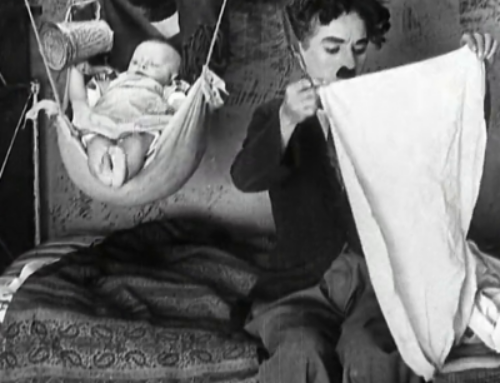Urgent need for a female point of view in caring for the ‘suspended’ landscape of the suburbs
The Church needs women in decision-making, says Francis. Listening to interviews with some of the hundreds of superior mothers that the Pope has called together, the tone is: we told him off and he realised it was time…Even the Catholic Church is realising that the female point of view is peculiar and can play a decisive role in strategic choices and not only in practices for the common good. I say ‘also’ because there are now numerous occasions when institutions realise that the female perspective is a (precious) possibility today, again to use Francis’ words.
Today. Perhaps it is because today we realise that an epochal change is taking place in many areas of our civilisation. To put it in slogans, we have moved from the post-Industrial Revolution foundational phase to that of continuity, from production to reproduction, from blacksmith’s work to fixer’s work. We are realising that we no longer need workers but maintenance workers, that the orchestra may not need to make new instruments but certainly needs to tune those that are already there. And we are realising that these skills are lacking in the traditional baggage of male knowledge and behaviour, and on the contrary are to be found, perhaps subtly but systematically, in women’s stories and personalities. And we are not just talking about musical orchestras or traditional craftsmanship: it is democracy itself that calls for the help of women and their non-violent point of view against authoritarian and racist drifts. It is the alternative economy to mercatism that seeks models of sustainability in the sobriety and tenacious solidarity of age-old domestic economies, of country and city families run by women. It is the land that is no longer a prairie for wild pastures, a space for cowboys, but a cultivated field to be restored, regenerated, rehabilitated, and seeks a management style that differs from the dialectical opposition of rules vs. freedom, towards an integrated and balanced composition of social and natural dynamics.
The watchwords are now care, care, sustainable planning. And we realise that we are not capable, that we have grown up with the idea that to solve problems we had to conquer, establish, establish laws, and that then the rest would go without saying, that it would all go downhill. On the contrary: after the start, full of enthusiasm and passion, the climb begins, slow, long, requiring breath and humility: the conquered people must be integrated, the founded city must be managed and made pleasant to live in, the established laws must be applied with common sense. And we realise that these are not virtues of male but female education.
The history of the peasant world teaches, for example, that the wealth of Po Valley families was founded on two pillars: the entrepreneur man, who shook hands on contracts and went to the market, and the reggiora woman, mistress of the wallet for expenses and of domestic strategies (especially when she was domina in the domus where dozens of families and labourers worked). Even in hard work, there was the same division of tasks, between foundation and cultivation: the terracing of the slopes was done with stones quarried by the men to hold the earth brought in and then cultivated by the women.
The peasant world teaches that marriage is a word for the treasure of the mother, who set aside the proceeds of the garden and the threshing floor for her care. They are treasures made up of daily crumbs held together by the patience of decades: in 18 years there are 6570 days and a mother counts them with penny jobs, one by one, from the day of her daughter’s birth, to make her dowry.
It is this marriage culture that we will have to rely on to save the heritage. Let us think about it: we men have made monuments and cities, roads and reclamation, but now we are incapable of holding the system together. We have not been careful to make it cheap for future generations. Women, who make generations, naturally (or culturally) care about durability, about continuity: they can apply to Gaia, to our landscapes, to our cities those bases of sober and conscious behaviour that have allowed them to manage billions of families to meet their needs with the resources they have, day by day.
Women’s role and weltanschauung, which are the strong link of the pre-industrial world (using the term coined by Nuto Revelli), must be able to be applied to the knots that now tighten the industrial and post-industrial world: it is the only sensibility and calm force that allows us to untie them instead of anxiously tackling them and ending up tightening them mortally, as we are doing in pursuing age-old habits of conquest and waste.
But it is a long and difficult road, still against the current with respect to the prevailing tendency to co-opt everyone, men and women, into the irresolvable diatribes in which we are mired, without allowing a different vision, without offering the possibility of truly alternative options on serious issues: the consumerist economy, social integration, youth work, for example. If, on these issues, Europe is entrenched in old, now counterproductive values, we need to start with seemingly less important areas, to demonstrate the power of a different approach and method of application.
On certain aspects, such as the environment, we can begin to be incisive starting with culture and education, on which everyone is distracted because they are caught in the grip of urgencies. A female-oriented environmental culture is already bearing positive fruit, for example by reminding everyone of their duty to participate in the clean-up, starting with small everyday actions. Even if in fact it is not so important to save water in the bathroom and differentiate waste collection, it is certainly crucial to train a collective and personal conscience on environmental responsibilities, a process that in democracy, once established in the collective conscience, becomes incisive even for the strong and aggressive powers.
But perhaps even more than the environment, it is the landscape that could benefit from marital rather than patrimonial management. Not only in the banal sense of the metaphors of women’s work (there is far too much talk of mending, mending, reordering), but in the strong perspective of a change of course in land management policies. It is already in the air: declaring a stop to the consumption of (agricultural) land means demolishing the consideration of town planning as a gymnasium for the conquest of territory. But the end of a cultural and technical tradition does not mean the immediate advent of another instrument or sensibility. It is true that the theme of ‘regeneration of the suburbs’ appears on the political table, evoked by the malaise of the banlieues, which in the media vulgate gives birth to terrorism. But for the time being, bad faith prevails, whereby we pretend to fall from the clouds and discover that it is bad in the suburbs.
In reality, more than half of Italians live in the suburbs, in that endless interval of the country that lies between the historic centres and the perfect countryside of woods and cultivated clearings. It is the product of 100 years of monoculture, in which we have only known how to urbanise, as if obeying a military order of colonisation, a cavalry charge to the cry of Avanti Città! . In reality we have made haphazard houses, roads, warehouses: never cities, always fragments, slabs, traces. In that ravaged battlefield, the landscape is suspended: no one wants to deal with what it feels like to live in places disrupted by change, whose history has been hidden, where there are no spaces for socialising, where no one has bothered to take care of the view from the windows, the route to school, the recognition of where one lives.
It is in this immense field hospital that the landscape must be cared for, and the care cannot be in the rules of those who conserve heritage: there is no heritage here (as certified by ministerial catalogues and regional plans). The cure lies, once again, in the Strong Ring, the feminine, diligent and capillary way that must reconnect places with people. It is a millenary but daily undertaking, like that of literacy in the days of DeAmicis, where interventions are not an end in themselves but serve a cultural, educational perspective, dictated by local and occasional sensitivity, which can only come from the mastery of a thousand red-penciled teachers.




